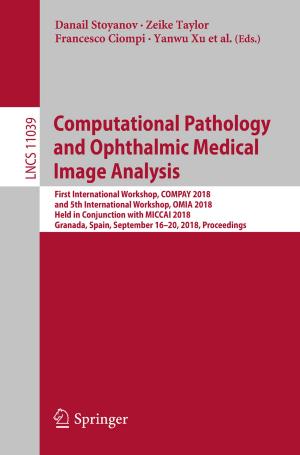Relationship Between Structure and Magnetic Behaviour in ZnO-Based Systems
Nonfiction, Science & Nature, Science, Physics, Magnetism, Technology, Material Science| Author: | Clara Guglieri Rodríguez | ISBN: | 9783319188874 |
| Publisher: | Springer International Publishing | Publication: | June 3, 2015 |
| Imprint: | Springer | Language: | English |
| Author: | Clara Guglieri Rodríguez |
| ISBN: | 9783319188874 |
| Publisher: | Springer International Publishing |
| Publication: | June 3, 2015 |
| Imprint: | Springer |
| Language: | English |
This work studies the magnetic behavior of ZnO nanoparticles capped with different organic molecules and showing room-temperature ferromagnetism (RTFM). Of particular significance is the combination of element-specific X-ray absorption spectroscopy (XAS) and X-ray magnetic circular dichroism (XMCD) techniques, which demonstrates the intrinsic occurrence of RTFM in these systems and indicates that it is not related to the 3-D states of the metallic cation but is relayed along the conduction band of the semiconductor. The discovery of room-temperature ferromagnetism (RTFM) in semiconductors holds great promise in future spintronics technologies.
Further results presented here include O K-edge XMCD studies, which demonstrate that the oxygen ions have a ferromagnetic response in these ZnO-based systems, providing the first direct support for claims regarding the appearance of oxygen ferromagnetism in oxide semiconductors at the nanoscale.
This work studies the magnetic behavior of ZnO nanoparticles capped with different organic molecules and showing room-temperature ferromagnetism (RTFM). Of particular significance is the combination of element-specific X-ray absorption spectroscopy (XAS) and X-ray magnetic circular dichroism (XMCD) techniques, which demonstrates the intrinsic occurrence of RTFM in these systems and indicates that it is not related to the 3-D states of the metallic cation but is relayed along the conduction band of the semiconductor. The discovery of room-temperature ferromagnetism (RTFM) in semiconductors holds great promise in future spintronics technologies.
Further results presented here include O K-edge XMCD studies, which demonstrate that the oxygen ions have a ferromagnetic response in these ZnO-based systems, providing the first direct support for claims regarding the appearance of oxygen ferromagnetism in oxide semiconductors at the nanoscale.















